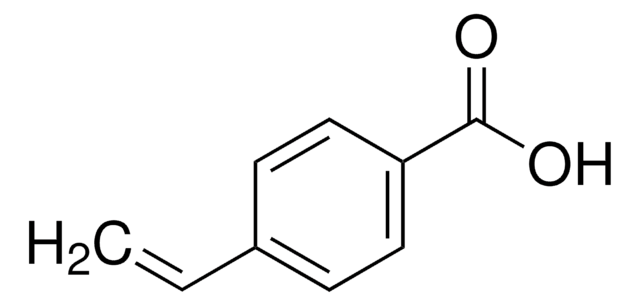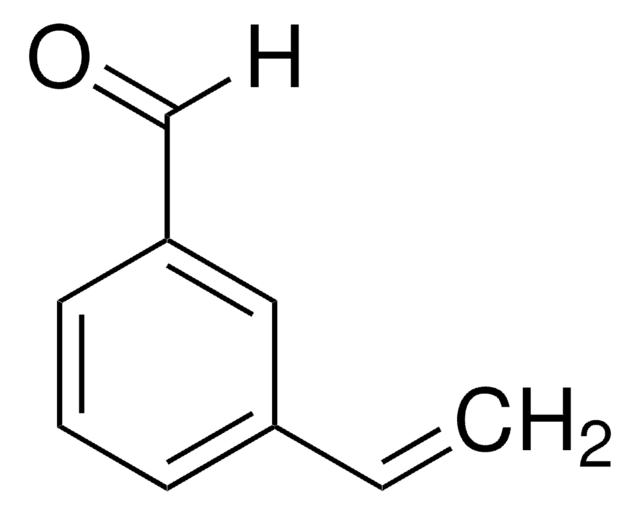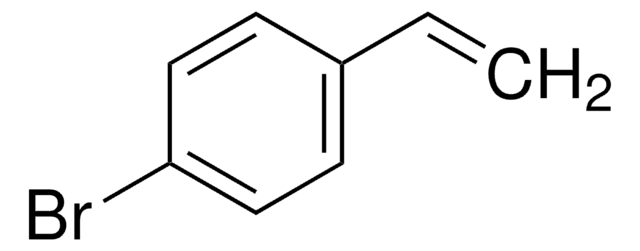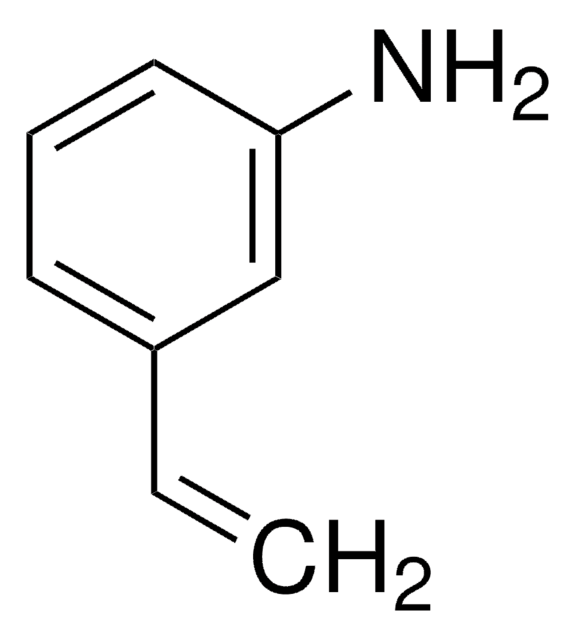436887
4-Vinylbenzyl chloride
90%
Synonym(s):
4-(Chloromethyl)styrene
About This Item
Recommended Products
Assay
90%
form
liquid
contains
500 ppm tert-butylcatechol as inhibitor
refractive index
n20/D 1.572 (lit.)
viscosity
1,830 cP(25 °C)(lit.)
bp
229 °C (lit.)
density
1.083 g/mL at 25 °C (lit.)
storage temp.
2-8°C
SMILES string
ClCc1ccc(C=C)cc1
InChI
1S/C9H9Cl/c1-2-8-3-5-9(7-10)6-4-8/h2-6H,1,7H2
InChI key
ZRZHXNCATOYMJH-UHFFFAOYSA-N
Looking for similar products? Visit Product Comparison Guide
Related Categories
General description
It is also:
- A component of ion exchange resins, photo-resist polymers, cross-linkable fibers, coupling agents and electroconducting polymers.
- Starter for various copolymer preparations.
- Dual functional monomer. Readily derivatized by chloride displacement.
Application
- The hypercross-linked polymer for supercapacitor applications. Incorporation of 4-vinyl benzyl chloride contributes to the formation of a porous structure and specific surface area which facilitate efficient electrolyte ion diffusion and provide ample sites for charge storage, leading to enhanced electrochemical performance.
- The polymeric thin films by the matrix-assisted pulsed laser evaporation (MAPLE) technique. The resulting polymeric thin films can exhibit non-linear optical effects such as optical second harmonic generation, electro-optic modulation, or optical frequency conversion. These properties make them suitable for various applications in non-linear optic devices.
Signal Word
Danger
Hazard Statements
Precautionary Statements
Hazard Classifications
Acute Tox. 3 Dermal - Acute Tox. 4 Oral - Eye Dam. 1 - Skin Corr. 1B - Skin Sens. 1
Storage Class Code
6.1A - Combustible acute toxic Cat. 1 and 2 / very toxic hazardous materials
WGK
WGK 3
Flash Point(F)
219.2 °F - closed cup
Flash Point(C)
104 °C - closed cup
Personal Protective Equipment
Certificates of Analysis (COA)
Search for Certificates of Analysis (COA) by entering the products Lot/Batch Number. Lot and Batch Numbers can be found on a product’s label following the words ‘Lot’ or ‘Batch’.
Already Own This Product?
Find documentation for the products that you have recently purchased in the Document Library.
Customers Also Viewed
Our team of scientists has experience in all areas of research including Life Science, Material Science, Chemical Synthesis, Chromatography, Analytical and many others.
Contact Technical Service













